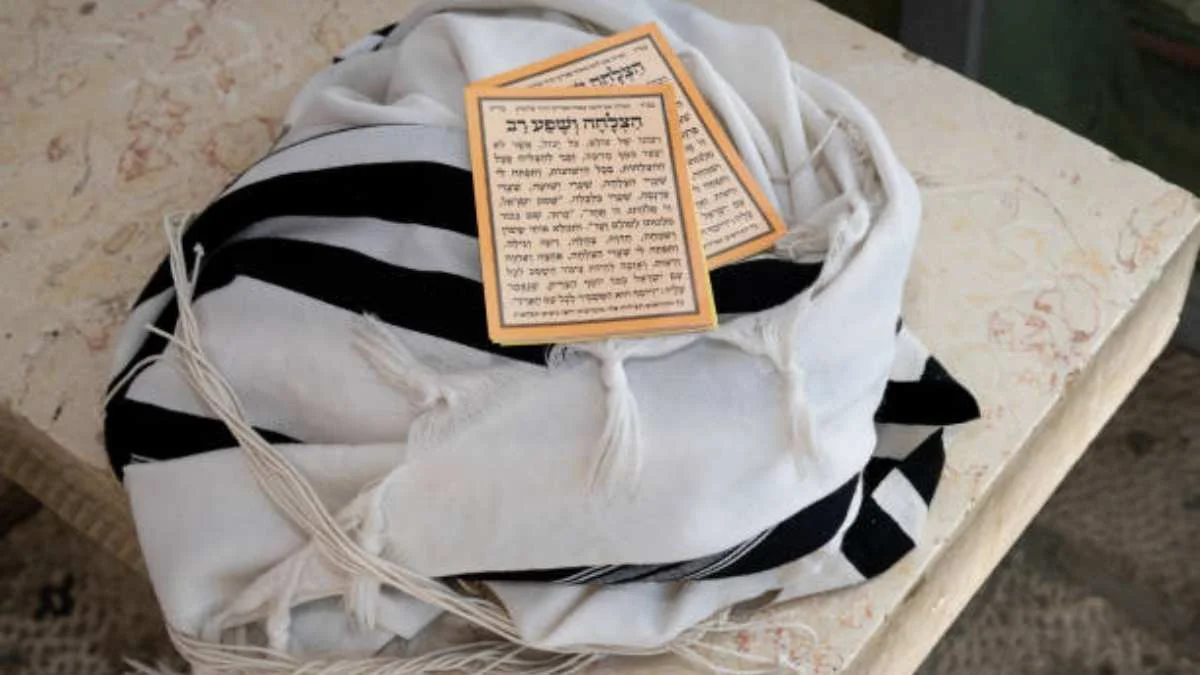GENERAL
The Significance of a Yizkor Prayer Card in Honoring the Memory of Loved Ones

The Yizkor prayer is a fundamental part of Jewish tradition, recited to remember and honor the souls of departed loved ones. It is said during specific Jewish holidays, including Yom Kippur, Shemini Atzeret, Pesach, and Shavuot. Many people use a Yizkor card as a guide during these moments of remembrance, ensuring they can recite the prayer correctly and reflect on the memory of those they have lost. The card serves as a meaningful tool that provides the text of the prayer and helps individuals connect spiritually to the act of remembrance. These cards often include additional reflections or dedications, making them deeply personal to those who use them. We will explore the significance of the Yizkor card, its role in Jewish tradition, and how it supports the grieving process while strengthening the connection to those who have passed.
Significance of the Yizkor prayer card
1. The Meaning and Purpose of the Yizkor Prayer
The Yizkor prayer is more than just words; it is an expression of remembrance, gratitude, and respect for the souls of the departed. The Hebrew word “Yizkor” means “to remember,” and the prayer itself asks God to grant peace and elevation to the souls of loved ones. It is believed that by saying the prayer, the living contribute to the spiritual well-being of the departed and honor their memory meaningfully.
The prayer also includes a commitment to acts of charity, as doing good deeds in the name of those who have passed is seen as a way to bring merit to their souls. The Yizkor card provides individuals with a simple yet profound way to engage in this tradition, ensuring they can participate in the ritual regardless of their familiarity with the prayer. By following the text on the card, people can focus on their connection to the past and reflect on the values and lessons their loved ones imparted.
2. The Emotional and Spiritual Impact of a Yizkor Prayer Card
For many, reciting Yizkor is an emotional experience that brings comfort and a deep sense of loss. A Yizkor card provides a tangible way to hold onto the memory of those who have passed while creating a structured moment of reflection. Seeing the words of the prayer in front of them helps individuals channel their emotions and direct their thoughts toward honoring their loved ones. The card also bridges tradition and personal remembrance, allowing people to find meaning in their grief while embracing the spiritual significance of the prayer. In mourning, the familiar text of the Yizkor prayer can bring solace, reminding individuals that their loved ones are not forgotten. The simplicity of a prayer card ensures that anyone, regardless of their level of religious observance, can participate in the ritual and feel a sense of connection to their family’s history and faith.
3. How Yizkor Prayer Cards Are Used in Synagogues and Homes
While the Yizkor prayer is traditionally recited in a synagogue setting, many people also use a Yizkor prayer card in private reflection at home. In congregations, prayer cards are often distributed before the service, allowing worshippers to follow along easily without needing to find the text in a prayer book. Some synagogues provide customized Yizkor cards with dedications in memory of community members who have passed away, creating a collective act of remembrance.
In a home setting, a Yizkor card allows individuals to say the prayer at their own pace, personally and intimately. Some families keep these cards in a designated place and bring them out on Yizkor days as part of their observance. Others use them when visiting a loved one’s grave, reciting the prayer as an act of respect and spiritual connection. The portability of a prayer card makes it a meaningful tool for honoring the departed in different settings, whether in a communal service or in private contemplation.
4. The Role of Charity in the Yizkor Prayer Tradition
One of the central elements of the Yizkor prayer is the commitment to performing acts of charity in the memory of those who have passed. Many Yizkor cards include a reminder of this tradition, encouraging individuals to give tzedakah (charity) in honor of their loved ones. The belief is that good deeds performed in their name elevate their souls and serve as a lasting tribute to their legacy. This practice highlights the idea that remembrance is not just about reciting words but also about taking meaningful action.
Some people donate to causes that are important to their loved ones, while others contribute to synagogues or charitable organizations that support those in need. By linking the Yizkor prayer to acts of kindness and generosity, individuals create a memorial that reflects the values and compassion of those they remember. The Yizkor card serves as a reminder of this responsibility, reinforcing the connection between memory and good deeds.
5. Personalizing a Yizkor Prayer Card for Family Traditions
For many families, a Yizkor card becomes more than just a printed guide; it transforms into a cherished keepsake with deep personal meaning. Some people choose to personalize their prayer cards by adding the names of their departed loved ones or including meaningful quotes and reflections. This makes reciting Yizkor even more personal, allowing individuals to reflect on specific memories and legacies. Some families pass down Yizkor cards through generations, creating a tangible link between past and present. Others make their versions, incorporating prayers or dedications in Hebrew and English to ensure accessibility for all family members. Personalizing a Yizkor card is a way to make the tradition uniquely meaningful, reinforcing the bond between generations while keeping the memory of loved ones alive. It becomes a sacred object that carries the love, remembrance, and faith of those who use it.
The Yizkor card is a powerful tool for remembering and honoring the souls of loved ones. It provides individuals with a structured way to engage in the meaningful tradition of Yizkor, whether in a synagogue or in the privacy of their homes. By following the words on the card, people can reflect on the impact of those they have lost and find comfort in the ritual of remembrance.
The Yizkor prayer is not just about looking back; it is also about taking action by committing to charitable deeds that bring merit to the souls of the departed. Personalizing a prayer card or using it as part of a family tradition strengthens the emotional and spiritual connection to those who came before. In a world where memories can fade over time, the Yizkor card serves as a lasting symbol of love, respect, and continuity, ensuring that the names and legacies of loved ones are never forgotten.
-

 BIOGRAPHY5 months ago
BIOGRAPHY5 months agoBehind the Scenes with Sandra Orlow: An Exclusive Interview
-

 HOME12 months ago
HOME12 months agoDiscovering Insights: A Deep Dive into the //vital-mag.net blog
-

 HOME1 year ago
HOME1 year agoSifangds in Action: Real-Life Applications and Success Stories
-

 BIOGRAPHY12 months ago
BIOGRAPHY12 months agoThe Woman Behind the Comedian: Meet Andrew Santino Wife




























